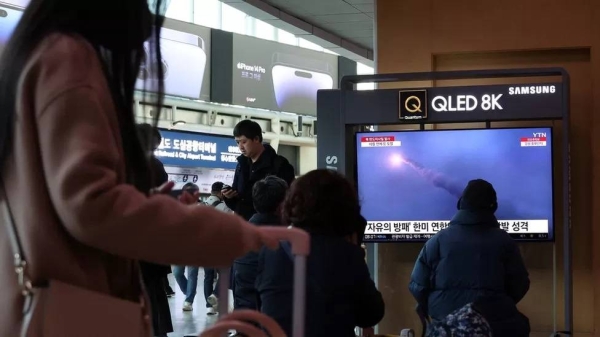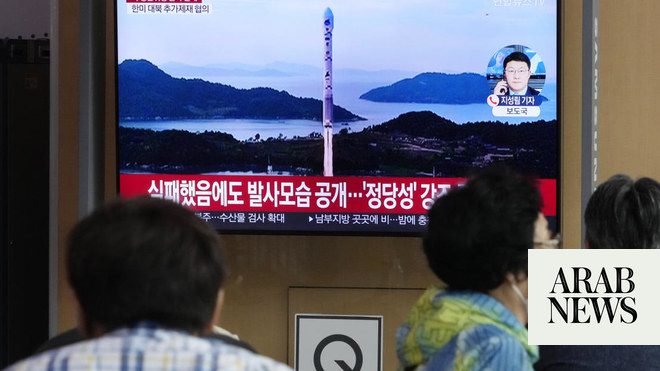
The Japanese government approved on Tuesday a decision to expand its ballistic missile defense system to counter North Korea’s missile threat.
The system will be backed with US-made ground-based Aegis radar stations and interceptors. A proposal to build two Aegis Ashore batteries was approved by Prime Minister Shinzo Abe’s cabinet.
The sites without the missiles will likely cost at least $2 billion and are not likely to be operational until 2023 at the earliest, sources familiar with the plan told Reuters earlier.
The decision to acquire the ground version of the Aegis missile-defense system, which is already deployed on Japanese warships, was widely expected.
“North Korea’s nuclear missile development poses a new level of threat to Japan and as we have done in the past we will ensure that we are able to defend ourselves with a drastic improvement in ballistic missile defense,” Japanese Minister of Defense Itsunori Onodera told reporters after the cabinet meeting.
North Korea on November 29 tested a new, more powerful ballistic missile that it says can hit major US cities including Washington, and fly over Japan’s current defense shield.
That rocket reached an altitude of more than 4,000 km (2,485 miles), well above the range of interceptor missiles on Japanese ships operating in the Sea of Japan.
North Korea says its weapons programs are necessary to counter US aggression.
The new Aegis stations may not, however, come with a powerful radar, dubbed Spy-6, which is being developed by the United States.
Without it, Japan will not be able to fully utilize the extended range of a new interceptor missile, the SM-3 Block IIA, which cost about $30 million each.
A later upgrade, once the US military has deployed Spy-6 on its ships around 2022, could prove a costly proposition for Japan as outlays on new equipment squeeze its military budget.
Initial funding will be ring-fenced in the next defense budget beginning in April, but no decision has been made on the radar, or the overall cost, or schedule, of the deployment, a Ministry of Defense official said at a press briefing.
Japan’s military planners also evaluated the US-built THAAD (Terminal High Altitude Area Defense) system before deciding on Aegis Ashore.
Separately, Japan’s defense minister said this month Japan would acquire medium-range cruise missiles it can launch from its F-15 and F-35 fighters at sites in North Korea, in a bid to deter any attack.
The purchase of what will become the longest-range munitions in Japan’s military arsenal is controversial because it renounced the right to wage war against other nations in its post-World War Two constitution.
Earlier, Japan and South Korea urged China to do more to “pressure” North Korea to end its nuclear and missile programs, Japanese Foreign Minister Taro Kono said on Tuesday.
North Korea has boasted of developing a missile capable of carrying a nuclear warhead and reaching the mainland United States in defiance of UN Security Council resolutions and international condemnation, including from its lone major ally, China.
“China is currently implementing the United Nations Security Council resolutions (on North Korea), but China can probably do more,” Kono said after talks with South Korean Foreign Minister Kang Kyung-wha.
“We agreed on the need to put pressure firmly on North Korea.”
The US Navy’s top officer said on Tuesday said that vessels from eastern Pacific could be brought forward to reinforce US naval power in Asia as Washington contends with increased threats in the region.
US President Donald Trump and North Korean leader Kim Jong Un have exchanged bellicose rhetoric in recent weeks, with Trump threatening to destroy North Korea if provoked, while US diplomats have stressed the importance of diplomacy.
Trump on Monday unveiled a new national security strategy, again saying Washington had to deal with the challenge posed by North Korea’s weapons programs.












